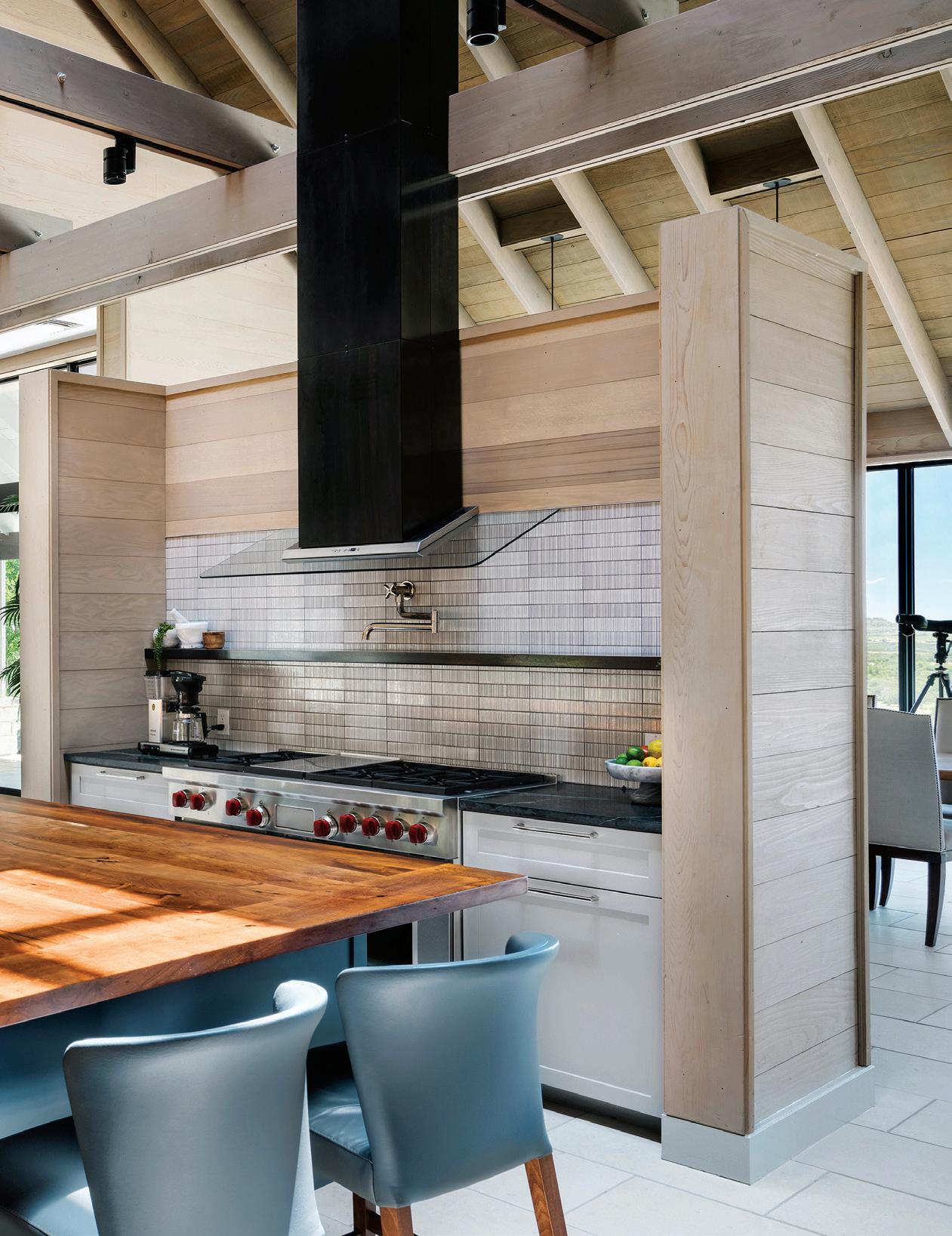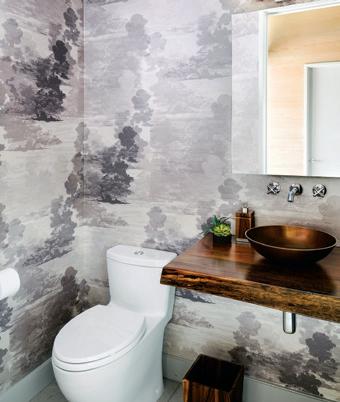
4 minute read
BUILDING ON A LEGACY
BUILDING
ON A LEGACY
Advertisement
ONE OF AN ARCHITECT’S GREATEST CHALLENGES IS FIGURING OUT HOW TO APPROACH A HOME REMODEL WITHOUT OVERWRITING THE ORIGINAL STYLE THAT MADE THE PROJECT SO INTERESTING IN THE FIRST PLACE. IN THE CASE OF THIS BEAUTIFUL LAMPASAS PROPERTY, JAY CORDER AND TEAM NEEDED TO NAVIGATE THEIR CLIENTS’ REQUEST TO STRENGTHEN AND MODERNIZE THEIR HOME WHILE RESPECTING AND ENHANCING THE VISION OF LEGENDARY ARCHITECT FRANK WELCH.





FFOR CORDER, THE CHALLENGE TO BUILD ON THE vision of architect Frank Welch was his primary draw. “The site was absolutely stunning,” said Corder, “I was intrigued by the idea of tracing Welch’s steps and finding hopefully some new expressions to create something unique.”
Corder favors a technique called “visual listening” to quantify a project’s “programmatic needs.” For Corder, it’s important to engage clients in “a process that allows, encourages, and in some cases requires them to really think through their needs and how those translate to spaces that resonate.”
In this particular case, the home was impeccably designed from the get-go and just needed a refresh of several outdated spaces. “The original means and methods were simply at the end of their life spans,” said Corder, while later “additions, remodel and remediation attempts had either severely compromised the envelope or began to cover up the original design in a way that wasn’t playing nicely.” Therefore, the task was to subtly walk back some later changes, while adding new elements, to bring a cohesive and practical vision to life. The result is one spectacular home that marries rustic charm and modern conveniences and tastes. In terms of materials, the crew opted for ones that are inherently “rot-resistant and age or patina naturally.” Red cedar adorns the exterior and adheres to the original design, while white cedar makes up the interior walls and vaulted ceilings in a “tight, shiplap installation.” These colors give off a warm glow in the ample supply of natural light from the floor-to-ceiling windows offering mile-long views of Texas planes. The open floor plan allows fluid movement between the home’s living spaces and extends to the cream-colored stone deck. A covered sitting area is situated poolside while a smattering of other outdoor furniture gives guests the choice of where to take in the sunset and cool evening breeze.
Corder needed to find a meeting of “functional goals while also paying close attention to original detailing, concept and refinements in order to bring everything together.” With help from BIM modeling, first the team streamlined and distilled the original home plan and details to “create a slightly more ‘taut’ modernist version of the original design.” Corder and team “did this with more flush detailing



of things like trim [plus] a more minimal window selection that broke down the wall between inside and out.” Additionally, the waterproofing and building envelope systems were revamped to extend the home’s life span, while also reinforcing the “original lines, diagram and concept of the plan.” One example of this feat are the concealed doors that lead into the service spaces, allowing Corder to “further emphasize the original circulation lines of the house.”
Thanks to interior designer Kasey McCarty, the rustic ranchinspired materials complement the home’s modern finishes. According to McCarty, the home’s original red saltillo tile floor “felt very out of place and was holding the house back.” By updating the literal and figurative foundation, McCarty was able to transform the space with locally-sourced Lueders limestone, the “subtle star” of the show, to achieve a natural look. Other highlights include the vein cut Travertine in the master bathroom meant to “mimic the landscape,” blown glass lassos ceiling lights above the dining room table, and an eye-catching wallpaper in the powder bathroom representing the surrounding windswept hills. Yet even with these fun touches, McCarty never lost sight of Welch’s original design. “It was a really great honor to work on such a well-known architect’s home,” said McCarty, stressing the importance of “preserving [Welch’s] elements” while blending in a fresh perspective.
After working in concert with McCarty and a group of talented contractors, Corder is able to look back on the project with pride. “I am particularly proud of the restraint we maintained,” said Corder, “The form of the building is so simple it might have been easy to approach solutions that would erode that or otherwise mask it.” By using the original drawings as a “road map and a set of rules,” Corder was able to translate and complement Welch’s work with “a modernist sensibility” without replacing it outright. “This was a really fun project,” reflected Corder, “I enjoyed very much attempting to interpret a legend’s work in a way he would find pleasing while still keeping the clients happy, too!” u
JAY CORDER ARCHITECT 512-243-8507 | jaycorder.com
KASEY MCCARTY
512-773-2833 | kaseymccarty.com








